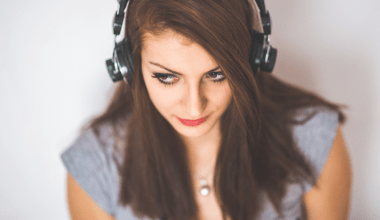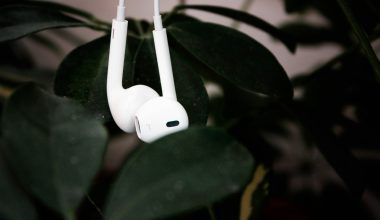Have you ever heard a jingle or tune in an ad and couldn’t get it out of your head? That’s the power of advertisement music! It’s the background music or song that plays in commercials, making them more interesting and emotional.
Advertisement music is not just sound. It helps people remember a brand, feel a certain way about it, and even trust it. For example, think of the happy Coca-Cola jingle or the dramatic background music in Nike ads. These tunes stay with you, don’t they?
Why Is Advertisement Music Important?
1. It Makes Ads Memorable
Music helps people remember ads. Imagine an ad with just words—it won’t stick, right? Add a catchy tune, and suddenly, it’s unforgettable.
2. It Makes People Feel
Music has the magic to make us happy, calm, excited, or even nostalgic. When an ad uses the right music, it connects emotionally with people.
3. It Builds Trust
Familiar tunes make people feel safe and connected. If they like the music in an ad, they’re more likely to like the product too.
How Does Advertisement Music Work?
Music in ads is like a secret language. It talks to your heart and mind without you even realizing it. Here’s how it works:
- It Tells a Story: Imagine a sad ad without soft music—it wouldn’t make sense. Music sets the mood and tells you what to feel.
- It Creates Identity: Think of McDonald’s and the “I’m Lovin’ It” jingle. It’s so unique that you know it’s McDonald’s without even seeing the ad.
- It Influences Actions: Happy, fast music might make you want to buy something fun, while calm music might make you trust a product.
How Advertisement Music Has Changed Over Time
Advertisement music has grown just like everything else.
Early Days: Simple and Catchy
In the 1950s, brands used short, catchy jingles to grab attention. For example:
- Coca-Cola’s “I’d Like to Buy the World a Coke” became famous worldwide.
- Simple songs were easy to sing along to, making them stick in people’s minds.
Today: Emotional and Diverse
Now, ads use every type of music, from pop songs to soft instrumentals. Brands focus more on feelings than catchy words. For example:
- Apple often uses calm and modern tracks to match its sleek, clean image.
- Nike uses energetic music to inspire people to push harder.
What Makes Good Advertisement Music?
Not every song can be advertisement music. It needs to be:
- Catchy: So people remember it.
- Relevant: It should match the brand and product.
- Emotional: It should make people feel something.
Types of Advertisement Music
Brands use different kinds of music depending on what they want people to feel.
- Jingles: Short, fun songs with brand names in them. Example: McDonald’s “I’m Lovin’ It.”
- Pop Songs: Using a hit song can make an ad trendy and exciting. Example: Many car ads use popular tracks to look cool.
- Classical Music: This is used to show elegance and class. Example: Luxury car ads often have soft piano or violin music.
- Electronic Music: Perfect for tech brands or modern products. Example: Smartphone ads love futuristic beats.
The Psychology of Advertisement Music
Music is powerful because it speaks to our emotions and memories. Here’s what it does:
- Makes You Remember: Your brain is wired to recall music easily.
- Changes Your Mood: It can make you feel happy, sad, or energetic.
- Helps You Decide: If the music feels right, you feel the product is right.
How Do Brands Choose Music for Ads?
Creating or picking the perfect advertisement music is not easy. Here’s how it’s done:
- Understand the Brand: First, brands think about what they want to say. A fun brand will use happy music, while a serious one will use calm music.
- Create or Pick Music: Some brands hire composers to make unique music. Others buy popular songs to use in their ads.
- Test It Out: The music is played to small groups to see if it works before the ad is released.
Challenges of Using Advertisement Music
Even though music is amazing for ads, there are challenges too:
- Cost: Popular songs can cost a lot of money.
- Copyright Issues: Brands must get permission to use music, which can take time.
- Audience Preference: Not everyone likes the same music. What works for young people might not work for older ones.
Amazing Examples of Advertisement Music
1. Intel’s Chime
The famous “Intel Inside” sound is simple but unforgettable.
2. Coca-Cola’s Happiness
Every Coca-Cola ad has cheerful music, making people smile.
3. Apple’s Sleek Sounds
Apple uses calm, modern music that matches its innovative image.
4. Nike’s Powerful Tracks
Nike combines motivational music with strong visuals to inspire action.
Fun Facts About Advertisement Music
- The McDonald’s jingle “I’m Lovin’ It” was sung by Justin Timberlake in its first ad.
- Studies show that ads with music are 20% more memorable than those without it.
The Future of Advertisement Music
The future is exciting for advertisement music. Here’s what we might see:
- AI-Generated Music: Computers can now create music, making it cheaper and faster for brands.
- Interactive Music: Ads might have music that changes when you interact with them.
- Personalized Music: With technology, brands might make ads with music just for you based on your preferences.
How You Can Use Advertisement Music for Your Brand
If you want to make ads that people love, here’s how to start:
- Know Your Audience: Understand what music your audience enjoys.
- Be Unique: Create music that stands out and matches your brand.
- Think About Feelings: Choose music that makes people feel something special about your product.
Conclusion: Why Advertisement Music Matters
Advertisement music is like the heart of an ad. It makes people listen, feel, and remember. Without it, ads would feel empty. Whether it’s a simple jingle or a deep, emotional tune, music can make your brand unforgettable.
Related Articles:
For further reading, explore these related articles:
- What is Vevo Music and Why It’s Important for Artists and Fans?
- How to Get Verified on Instagram: The Ultimate Guide for Everyone
For additional resources on music marketing and distribution, visit Deliver My Tune.






